We start with a rough schematic of charging structure in a thunderstorm. Note the two areas where positive charge collects; i.e. the top and bottom of the cloud
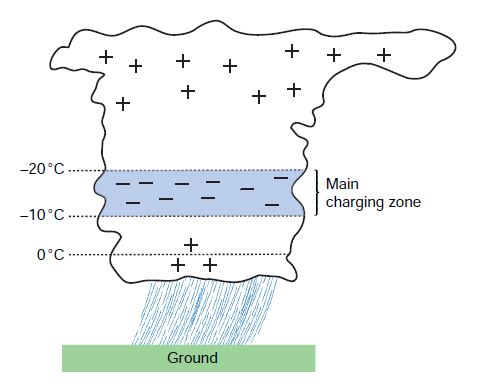
Most thunderstorms occur in cold clouds. An important observational result is that the onset of strong electrification (charge separation as shown above) follows the occurrence of ice precipitation (hailstones, graupel) in the cloud. These ice particles are called the rimer .
After the rimer falls through the cloud it becomes negatively charged due to collisions with small particles (droplets or ice) in the cloud. This gives rise to the negative charge in the main charging zone (as shown above).
The corresponding positive charge is imparted to the (generally smaller) cloud particles as they rebound from the rimer collision and these positively charged particles are carried upwards by updrafts. This is the source of charge separation in the cloud and it is entirely a dynamical process.
The physical details of this process remain unknown and many ideas are not able to predict the higher observed rate of chargegeneration. The collision process appears to be very efficient
in inducing charge separation and this is not well understood.
Over the past many years, instruments flown through thunderstorms have now been able to essentially measuure the charging rate and we can use these measurements as an example:
From observatoins we can set the rate of charge generation in a thunderstorm to be q = 1 C km-3 hr-1 (remember, a coloumb is a big number).
Let's now determine the electric charge that would have to be separated for each collision of an ice crystal with a rimer to explain this observed rate.
Assumptions:
- Ice crystal have concentration of 105 m-3; collision efficiency = 1;
- rimers are spheres of radius 2 mm and density of 500 kg m-2 (why less than 1000?)
- precipitation rate due to the rimers is 5 cm per hour of water equivalent -- again consistent with observations.
If dN/dt is the bnumer of ice cyrstals collisons with rimers in a unit volume of air in 1 second and each collision
separates q coulombs (C) of electrical charge, then the rate of
charge separation per unit volume per unit time is:
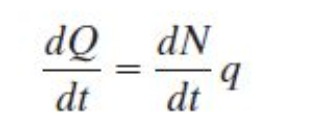
Next we assume a) the fall speed of the ice crystals is neglibile and b) the larger rimers collide with the smaller ice/water droples with 100% efficiency - that is ever collision produces more charge separation.
 

Now consider a cylinder (rain guage) with cross sectional area A:
- All of the rimers within a distance vH from the top of the cylinder reach the bottom in 1s.
- The number of rimers in this volume is then vHAnH
- Each rimer has a mass of mH and assumed to be spherical.
- So

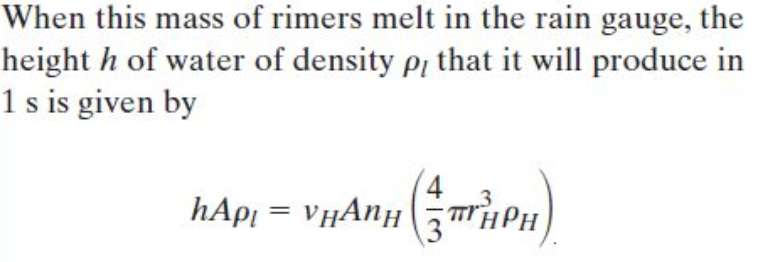

Now subsitute vHnH from the previous expression for dN/dt and using q=(dQ/dt)*(dN/dt) -1 to get
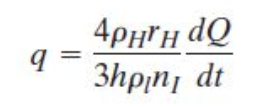
Now we can plug in some numbers:
- ρH = 500 kg m-3
- ρl = 1000 kg m-3
- rH = .002 m
- nl = 105 m-3
- h converted from 5 cm per hour = .05/3600 ms/
- dQ/dt , again converted to seconds = 1/3600*C km-3 s-1
Multiply everything out to get and q = 16 x 10-15 C per collision.
Sequence of events for lightning:
- Negative charge moves downward from the lower main negative charge center in discrete steps that last about 1 micro second and each step advances down about 50 meters.
- The time interval between these steps is about 50 micro seconds
- This process is initiated by the small pocket of positive charge at the cloud base.
- The discharge releases electrons that were previously attached to precipitation particles.
- This free charge overwhelms the once positive pocket and the base of the cloud now becomes negative (inducing positive charge on the ground)
- A discharge now moves from the positive ground to the cloud (this is rarely observed)
- Then the return stroke to the ground is full of lots of electrons and is the bright lightning flash, typically 30,000 amps!
- The return stroke heats the air through which it passes to about 30,000 K in a few microsecond so air has no time to expand in response to "conserve" ideal gas law (equilibrium). So pressure in the channel increases instantaneously
to 10-100 atm. High pressure channel expands rapidly into surronding lower Temperature air creating a supersonic shock wave which eventually generates the sound wave, known as thunder.
This sequence is schematically shown below
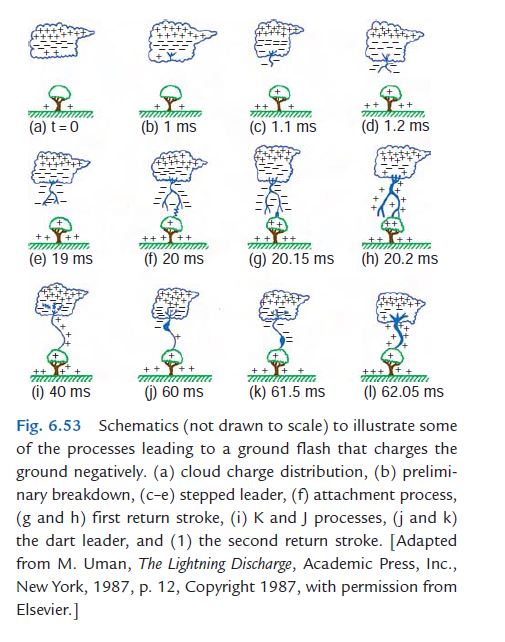
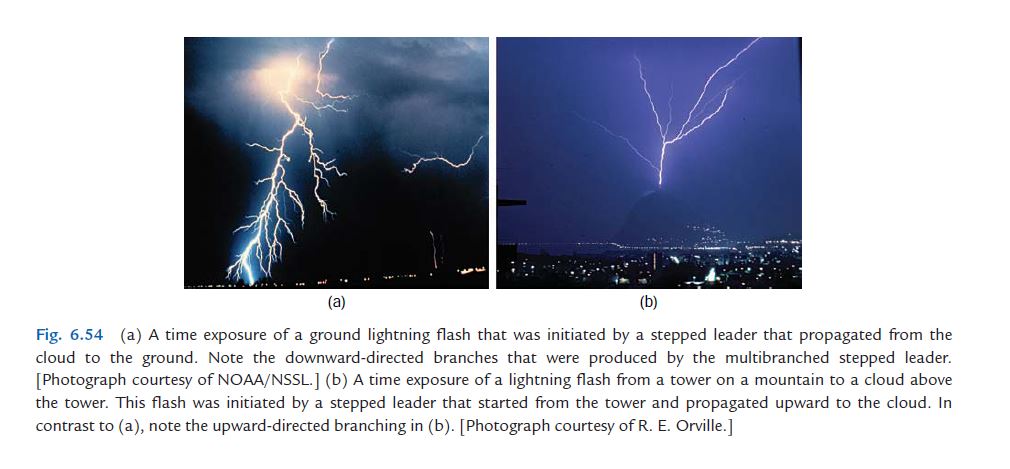
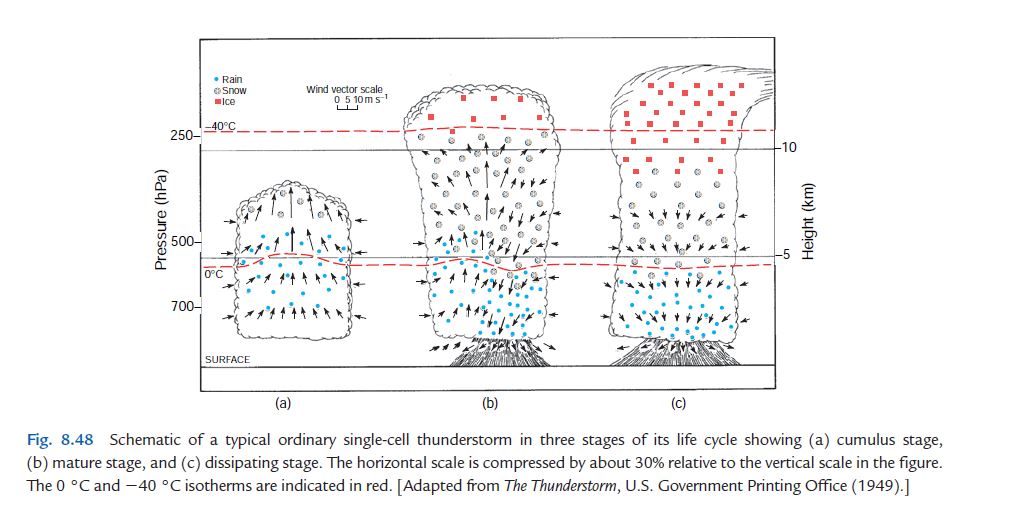
|